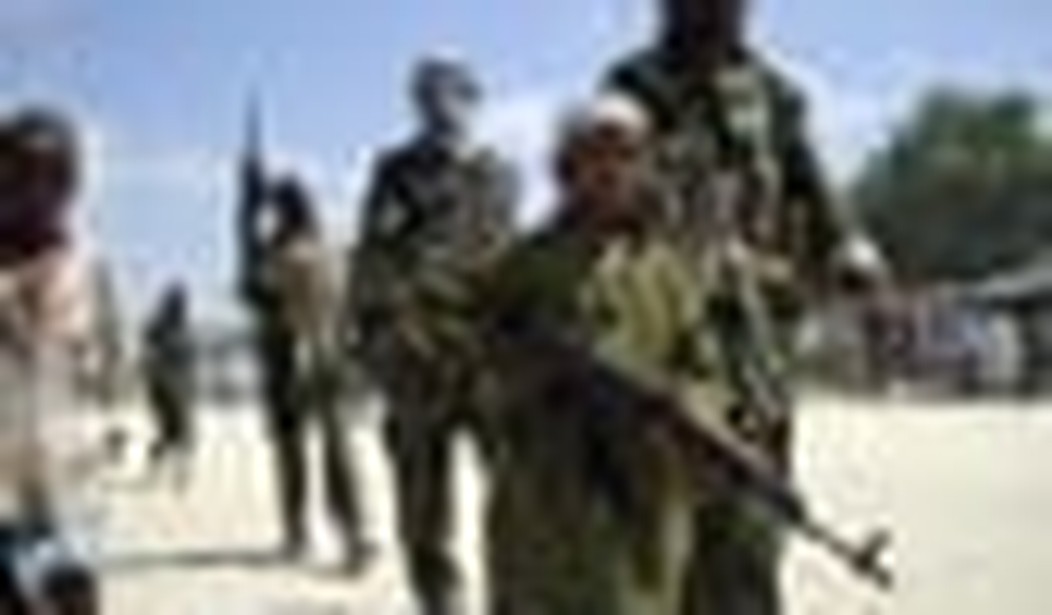Al-Qaeda’s local affiliate, al-Shabab, is losing the war in Somalia and conditions in the capital, Mogadishu, are improving. African Union and Somalia Transitional Federal Government (TFG) troops forced al- Shabab fighters out of the capital last August. The African Union’s AMISOM forces now number 12,000.
For the first time in 17 years, the UN is opening its political office in Mogadishu. Embassies are also restarting operations, reflecting greater confidence in the security situation.
This month the African Union and allied Somalian forces launched a new offensive that took Mogadishu University outside the city, allowing them to control the suburbs as well as the city for the first time in years.
Meanwhile, Ethiopian forces captured Beledweyne, 30 kilometers from the Ethiopian border. The town is quite strategic since the main north-south road passes through it. Next, Ethiopian forces rapidly advanced to the central regions of Hiran and Galgadud, forcing al-Shabab fighters there to retreat. And Ethiopian troops have continued their rapid advance southward into the heart of al-Shabab territory by forging an alliance with clan militias in the Shabelle River Valley.
In the south, a formidable force of Kenyan combat troops and local clan militias, backed up by fighter jets and heavy armor, is pressing al-Shabab hard. The Kenyans have been making significant territorial gains in Gedo and Juba.
Thus, al-Shabab is being forced to fight on multiple fronts at a time when the movement is wracked by internal leadership rivalry between Mukhtar Ali Robow and Sheikh Hassan Dahir Aweys, on one side, and Ahmed Abdi Godane on the other. In addition, al-Shabab has also lost some of its most important military commanders, notably Fazul Abdul Mohammed, killed at a government roadblock in Mogadishu. Mohammed was al-Qaeda’s military operations chief in East Africa and a key Godane ally.
At the same time, American drones continue to take out key skilled foreign jihadis in the al-Shabab ranks. This month, the Lebanese Bilaal Al-Barjawi, also known as Abu Hafsa, was killed in such a drone attack.
While al-Shabab is definitely on the ropes, it is much too early to conclude it is defeated. The movement has a history of rebounding following military defeats by shifting back to guerrilla and terrorist tactics. It used a suicide truck bomb to kill 10 Ethiopian soldiers, for example, in Beledweyne. Every day, on the average, eight improvised explosive devices are discovered or detonated in the capital.
More needs to be done on the financial front to ensure that al-Shabab does not have the capability to rejuvenate. Shutting down the financial lifeblood to the movement is just as important as the military campaign on the ground.
For example, al-Shabab blackmails aid agencies to pay it off — a 10-15 percent registration fee (usually $4,000 to $10,000, plus 20 percent of every project they do). If a charity opens a feeding center or health clinic, one-fifth of the cost must be taken from helping the country’s poor in order to finance the revolutionaries.
Al-Shabab also deforests much of the area it controls to make charcoal that can be exported to Gulf Arab states in order to finance its war. The chopping down of trees contributes to famine by taking away a local source of livelihood.
The African Union and other forces also need to have a clear political strategy. Areas liberated from al-Shabab control, such as Hiran, Galgudud, or Mudug, are little more than tiny fiefdoms at the whim of the local clan militia commander. There are already 14 to 20 “mini-states” in the country where people’s needs are ignored, a possible motive for popular support for the Islamists in the future.
The situation in Somalia shows that revolutionary Islamist forces can be defeated but only if the combatting side gets its economic and political strategy together.









Join the conversation as a VIP Member